#myriapods
Text
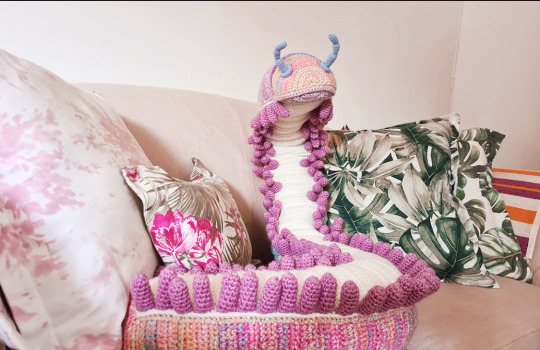

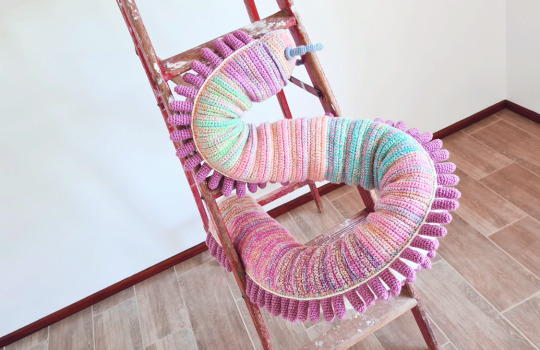

Guys look at this GIANT millipede!! Free pattern from Projectarian! 🐛✨
Definitely want to make one myself!
#millipede#millipedes#crochet#crochet critters#myriapod#myriapoda#myriapods#insects#entomology#bugs#insect#bug#nature#bugblr#projectarian#needle crafts#yarn
53K notes
·
View notes
Photo



Very busy today so just have two millipedes mating! Happy Friday!
Photographed in Singapore by Nicky Bay // Website // Facebook
Shared with permission; do not remove credit or re-post!
4K notes
·
View notes
Text
There were so many flatback millipedes out after dark this evening (like, hard to avoid stepping on them) and I'm slowly getting better at shooting fluorescent creatures 🖤🩵
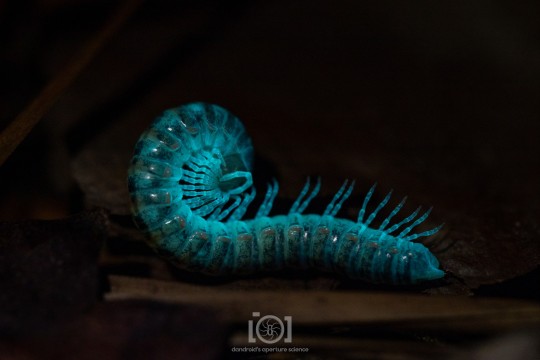
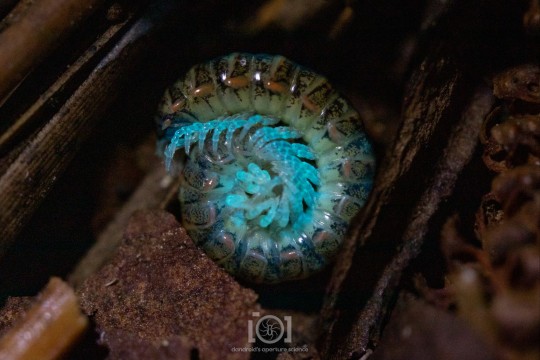
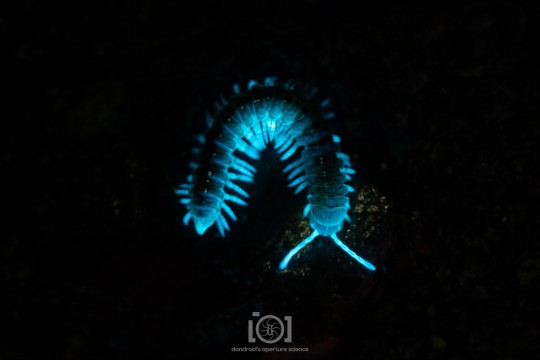

3K notes
·
View notes
Text
an american giant millipede (a Narceus species in the americanus/annularis complex) traversing a lichen-covered boulder on a mountaintop (Massachusetts, 8/7/23)
Sometimes referred to as “iron worms”, these large millipedes are often locally abundant in mature forests and mountainous areas in the northeastern US. They spend most of their time hidden in decayed logs and leaf litter but regularly emerge to wander in the open, climbing rocks and trees to graze on lichen. Protected by toxins that deter most predators, they do so even in broad daylight, especially during wet or cloudy weather.
2K notes
·
View notes
Text
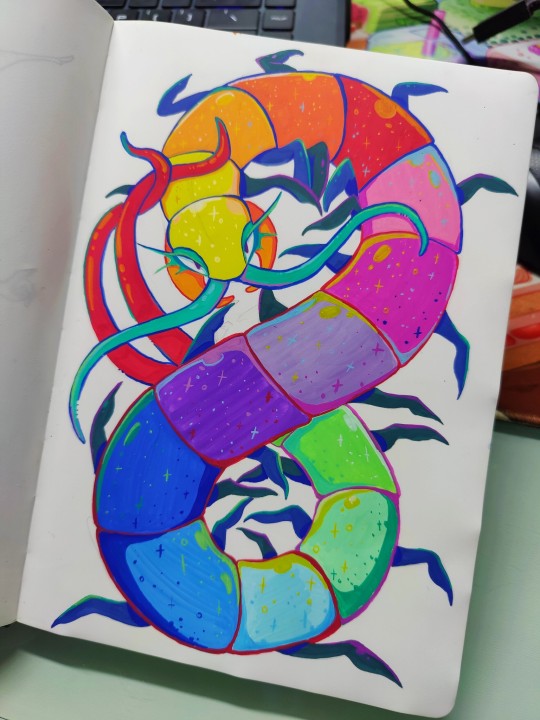
Do you love the colour of the centipede?
478 notes
·
View notes
Text


they are roommates who live under my snail statue in the garden
800 notes
·
View notes
Text
King
Rosey legged millipede
861 notes
·
View notes
Text

A pill millipede (Glomeris esterelena) in France
by Duborget.R
#pill millipedes#millipedes#myriapods#glomeris esterelena#glomeris#glomeridae#glomerida#diplopoda#myriapoda#arthropoda#wildlife: france#wildlife: europe
479 notes
·
View notes
Text
Orthoporus texicolens
195 notes
·
View notes
Text

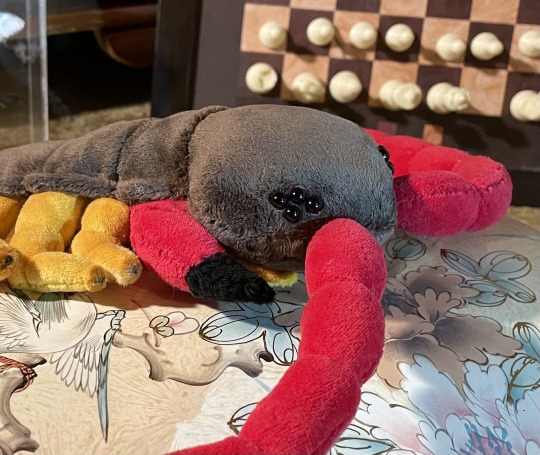
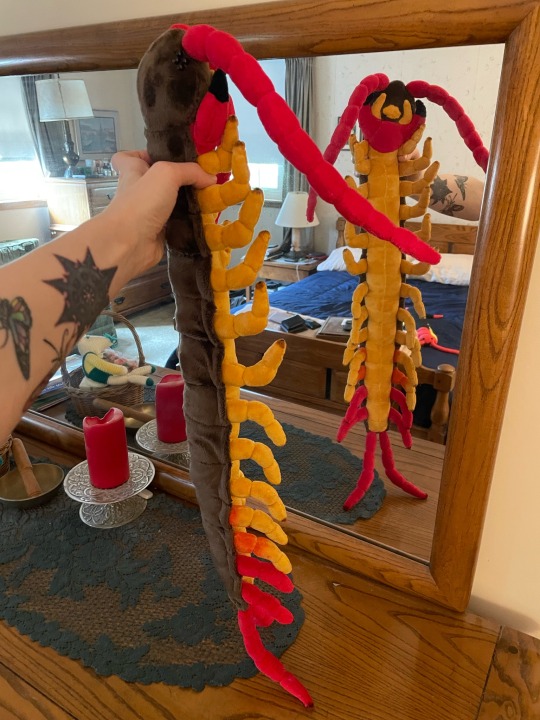

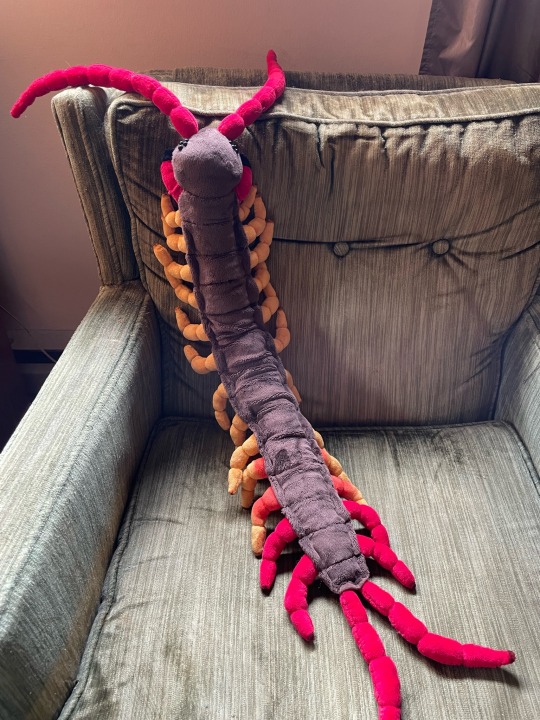
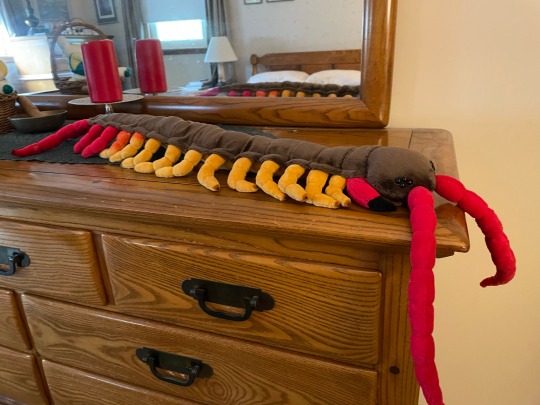
This was my second plush centipede. He was based on a common color morph of a Scolopendra dehaani and I called him Tybalt after the character in Romeo and Juliet. He was one of the least problematic plushes I have ever created in terms of getting threads tangled or needing to have pieces recut, and I was very happy with how he turned out. About a month after I finished him I put him up on my Etsy shop for the substantial price of $400. I wasn’t eager to sell him you see and I figured that if I was going to let him go I wanted to actually make something off of it. Unusually for my shop he was noticed very quickly and brought in a rush of views and favorites. I don’t really understand Etsy algorithms, but something about him clicked and he ended up selling very quickly. I have made quite a few centipedes since Tybalt but I will always look back on him fondly. I hope you’re happy where you landed buddy.
If anyone wants to check out my Etsy shop I’ll leave the address below. I sell weird handmade plushes and take custom orders if you have a hankering to own one yourself.
http://www.etsy.com/shop/HuggableMonsters
#centipede#centipedes#transgender artist#non binary artist#handmade plush#handmade#plush community#plush collector#plush commissions#plush animals#plushies#arthropods#myriapods#etsy#etsyseller#etsystore#artist on tumblr#art for sale#artist on etsy#plushblr
205 notes
·
View notes
Text
Shrew wizard summoning breakfast. This is @bowelfly fan art
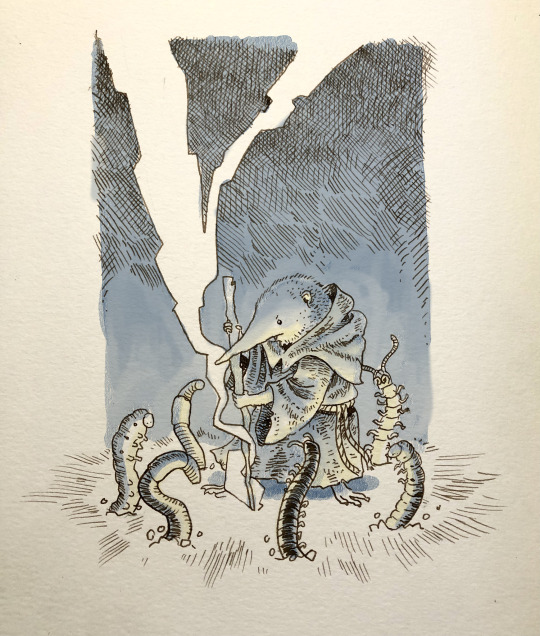
1K notes
·
View notes
Text
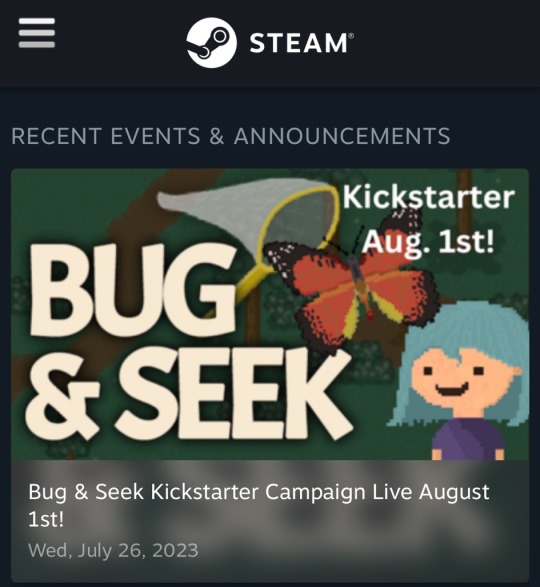



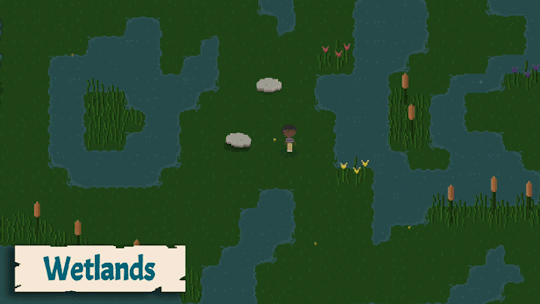


Bug and Seek!
“Being developed by a husband-wife dev team living in the woods, Bug & Seek is a relaxing, open-ended, bug catching simulator with a mystery twist. In Bug & Seek, you've just sunk your life savings into buying an abandoned Insectarium (bug museum)! Once the lifeblood of the town and its economy, someone stole all the bugs in the dead of night. Now it's up to you to catch and sell bugs to fulfill requests from collectors, neighboring towns, schools, and universities, all while building your personal collection. Become a master bug hunter as you grow level up your skills and expertise, upgrade your equipment, and expand your Insectarium. Meet the locals and complete quests to earn special items and discover what really happened during the Great Bug Heist.”
https://www.kickstarter.com/projects/bugandseek/bug-and-seek-a-cozy-bug-catching-sim-creature-collector
#insects#entomology#bugs#insect#bug#nature#bugblr#beetle#coleoptera#beetles#myriapods#arachnid#bug game#indie games#kickstarter#Bug and Seek
2K notes
·
View notes
Photo
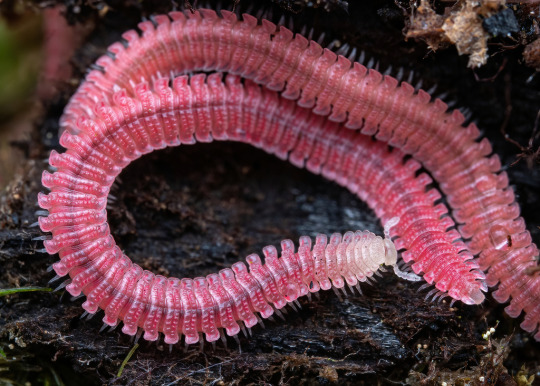
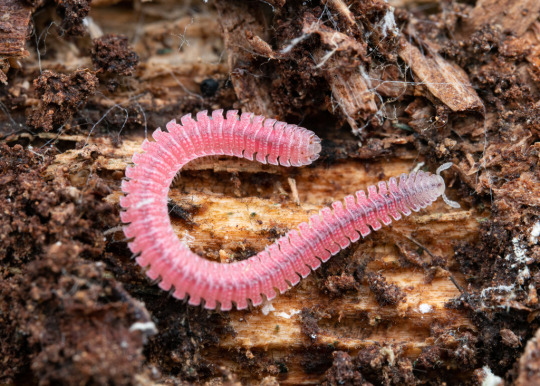

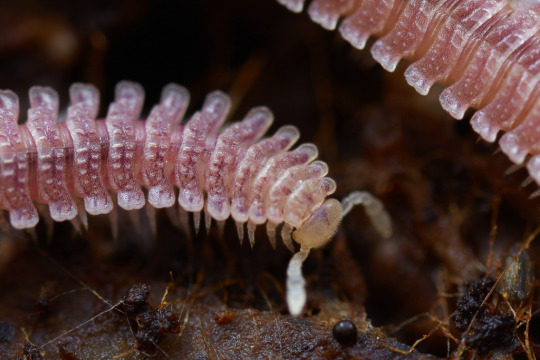

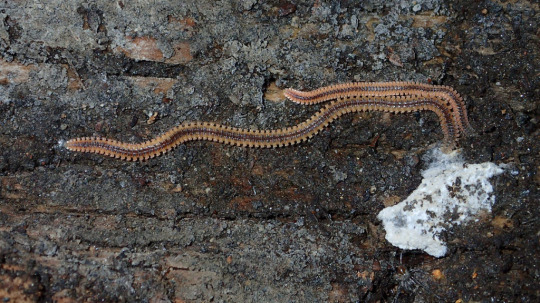


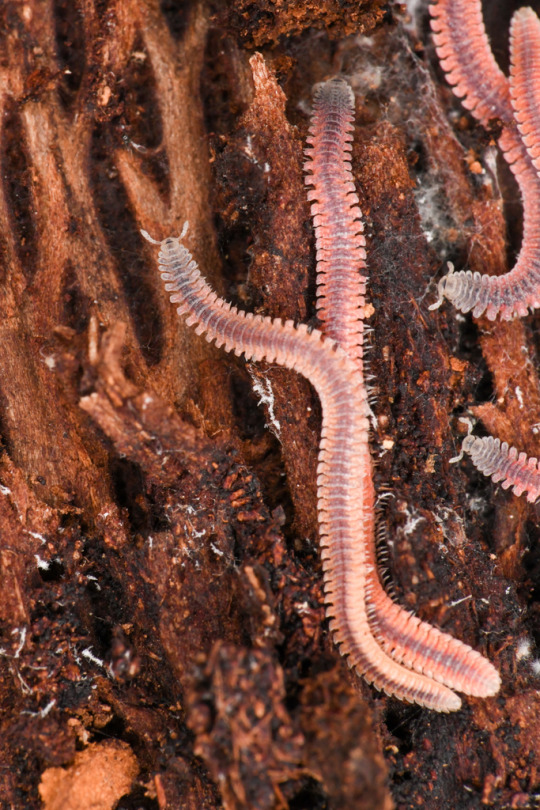
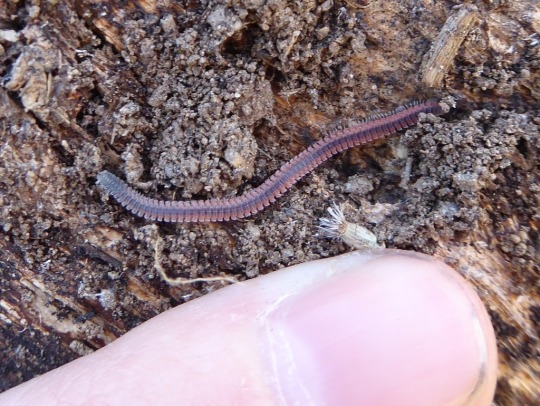
Pink feather boa millipede, Gosodesmus claremontus, Andrognathidae
Found primarily in California
Photos 1-3 by mhedin, 4 by kueda, 5 by merav, 6 by yetikat, 7-9 by chloe_and_trevor, and 10 (for scale) by biosam
#animals#curators on tumblr#bugs#myriapods#millipede#feather millipede#pink feather boa millipede#congregation#one nice bug#oops coming back to tag the#harvestman#in one of the pics#also i should add#arachnids
1K notes
·
View notes
Text
BABY CENTIPEDE 🥹

3K notes
·
View notes
Photo
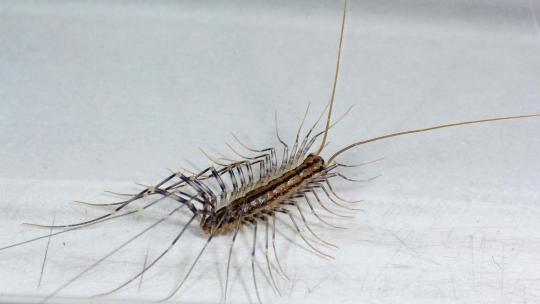
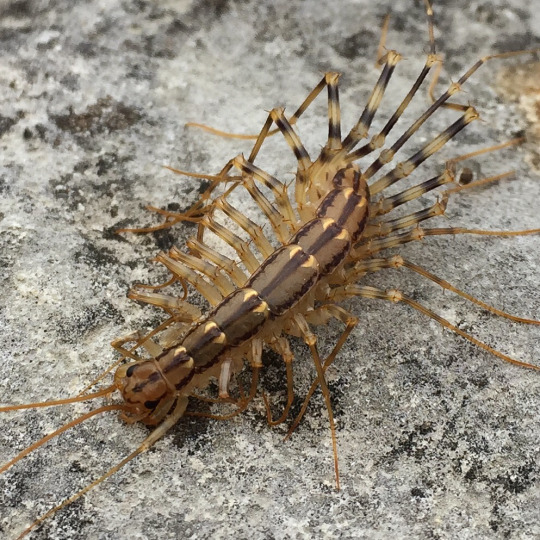
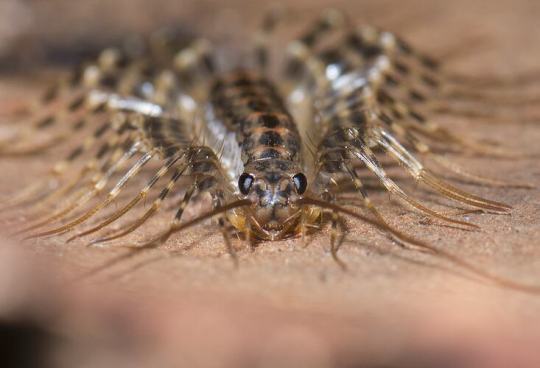
Open Your Home to the Common House Centipede
A common sight in homes throughout Europe, Asia, the Americas, and Australia the common house centipede (Scutigera coleoptrata) is a medium-sized species of centipede originally from the Mediterranean. In the wild, they prefer grasslands and deciduous forests where they can hide under rocks, logs, or leaf litter. These insects have also adapted well to urban development, and are frequently found in basements, bathrooms, and garages, as well as gardens and compost piles.
Like other centipedes, the common house centipede has less than 100 legs; in fact, they only have 15 pairs, with the front pair used only for holding prey or fending off threats. All those legs let the common house centipede move up to 0.4 meters per second (1.3 ft/s) over a variety of surfaces, including walls and ceilings. The actual body of S. coleoptrata is only 25 to 35 mm (1.0 to 1.4 in) long, but the antennae are often as long as the body which can give this insect a much larger appearance. However, they can be hard to spot, especially in their natural environments; their tan and dark brown coloration allows them to blend in seamlessly to surrounding vegetation.
Though they pose little threat to humans, house centipedes are predatory. Their primary food source is other arthropods, including cockroaches, silverfish, bed bugs, ticks, ants, and insect larvae. S. coleoptrata is a nocturnal hunter, and uses its long antennae to track scents and tactile information. Their compound eyes, unusual for centipede species, can distinguish daylight and ultraviolet light but is generally used as a secondary sensory organ. When they do find prey, house centipedes inject a venom which can be lethal in smaller organisms, but is largely harmless to larger animals. This makes them important pest controllers. In the wild, house centipedes are the common prey of rodents, amphibians, birds, and other insects.
The mating season for S. coleoptrata begins in the spring, when males and females release pheromones that they can use to find each other. Once located, the male spins a silk pad in which he places his sperm for the female to collect. She then lays fertilized eggs in warm, moist soil in clutches of 60-150. These eggs incubate for about a month, and the young emerge with only four pairs of legs. Over the next three years, juvenile house centipedes molt 7 times, each time gaining new pairs of legs. After they grow their last pair of legs, immature house centipedes molt an additional 3 times, at which time they become sexually mature. If they can avoid predation, individuals can live up to 7 years in the wild.
Conservation status: The common house centipede has not been evaluated by the IUCN, as it is relatively common both in the wild and in urban areas. Although they have been introduced to areas outside their native range, no detrimental environmental effects have been associated with their spread.
If you like what I do, consider leaving a tip or buying me a ko-fi!
Photos
Joseph Berger
David Paul
Conrad Altman via iNaturalist
#common house centipede#Scutigeromorpha#Scutigeridae#centipedes#myriapoda#myriapods#insects#arthropods#deciduous forests#deciduous forest arthropods#grasslands#grassland arthropods#urban fauna#urban arthropods#europe#north america#south america#asia#australia#oceania#animal facts#zoology#biology
621 notes
·
View notes
Text


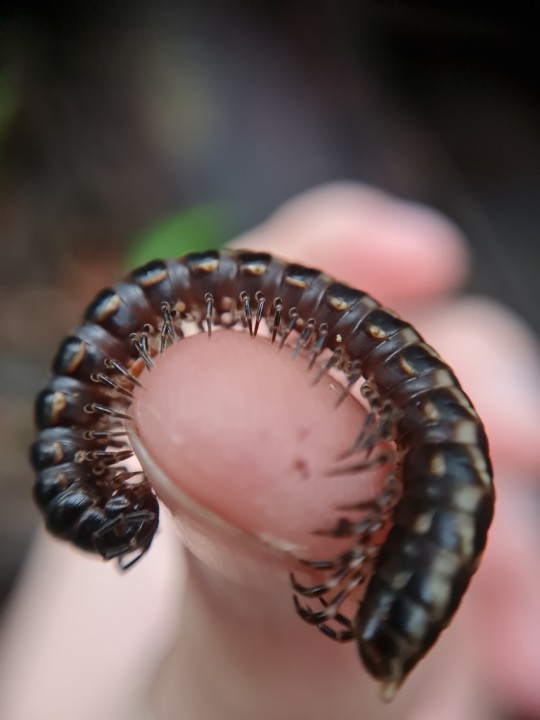
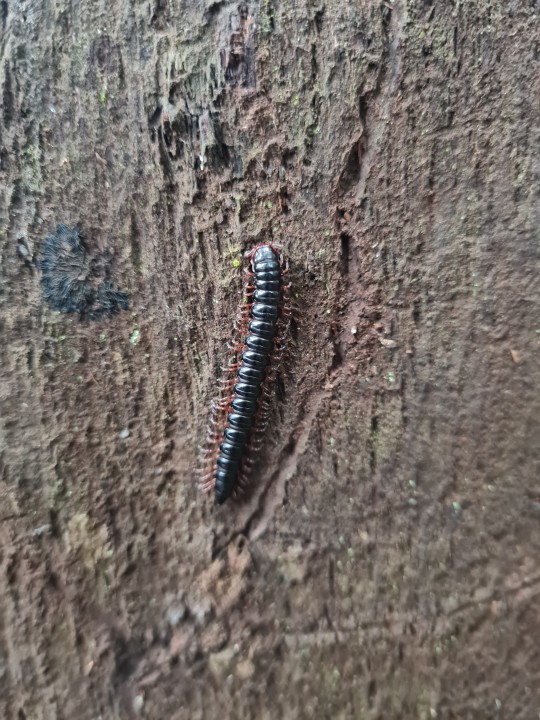


more millipede macros from that same rainforest hike, there was such an incredible variety.
Unknown millipedes (3 individuals, class Diplopoda).
149 notes
·
View notes